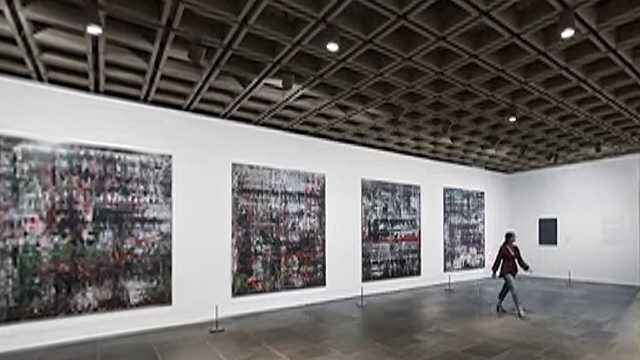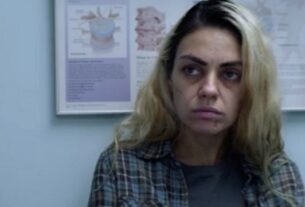Gerhard Richter Giving His Holocaust art to Berlin Museum
The paintings to be loaned to the museum include Gerhard Richter’s four-part series “Birkenau.”
Famed painter Gerhard Richter has donated 100 of his works to Berlin’s new Museum of the 20th Century. The works of art which will be on permanent loan to the museum include ones which depict the Holocaust.
The new museum, which is designed by Herzog & de Meuron, is still under construction. It cost $500 million to build and has yet to be given a formal opening date. So starting in 2023 the works will be given a temporary home in the Neue Nationalgalerie.
“It was clear to me that I cannot sell the Birkenau paintings, and neither do I want to,” the artist told the broadcaster Deutschlandfunk (DLF). “Then I had the idea of creating a foundation which would take in additional works.”
The paintings to be loaned to the museum include Gerhard Richter’s four-part series “Birkenau.” Painted in 2014, its title refers to a World War II concentration camp. The dark, foreboding paintings based on photographs of the camp are abstract, and Richter made them using a squeegee that pulled paint across his canvases.
–
[embedded content]
The paintings were recently on loan to the Metropolitan Museum of Art. In its description of them the museum explained that the 89 year old artist explored the material, conceptual, and historical implications of painting throughout his six-decade career. The Birkenau series “encapsulates his long-standing interest in art’s ability to reckon with issues of identity and collective memory, particularly in the context of post–World War II Germany. In the four paintings, Richter confronts the question of whether—and how—art is able to address the history of the Holocaust.”
The Birkenau paintings are based on four photographs secretly taken in the death camp of Auschwitz-Birkenau. After a yearlong attempt to render the photographic images, Richter gradually veiled his initial figurative drawings with color, scouring each coat of paint with a squeegee to produce layered, ruptured surfaces. The canvases’ distinctive facture and relatively subdued palette reflect the artist’s conscious struggle to address the grim documents of historical trauma while curtailing the spectacular nature of the reproduced photograph. Together, the series holds in tension the complex relationship between representation and abstraction, and the opposing forces of destruction and reconstruction.
From Richter’s Biography on his official website:
Gerhard Richter was born in Dresden on 9th February 1932, the first child of Horst and Hildegard Richter. They were in many respects an average middle-class family: Horst worked as a teacher at a secondary school in Dresden and Hildegard was a bookseller who liked to play the piano. In an interview with Robert Storr, Richter described his early family life as “simple, orderly, structured – mother playing the piano and father earning money.”
The post-war years caused difficulties for the Richter family, as for many others. Horst’s return was not that of a war-hero. Commenting on this period in later life, Richter reflected: “[Horst] shared most father’s fate at the time […] nobody wanted them.” In an interview from 2004, he added: “[we] were so alienated that we didn’t know how to deal with each other.”5 Horst’s former membership of the National Socialist Party, which all teachers had been obliged to join under the Nazi regime, made it difficult for him to return to teaching. He eventually ended up working in a textile mill in nearby in Zittau, before finding a post as an administrator of a distance learning programmer for an educational institution in Dresden.
While too young to be drafted into the German army during the Second World War, the war nonetheless had a deep impact on Richter. The family experienced economic hardship and personal loss: Hildegard’s brothers, Rudi and Alfred, and sister, Marianne, all died as a consequence of the war. “It was sad when my mother’s brothers fell in battle. First the one, then the other. I’ll never forget how the women screamed,” Richter recalls. Marianne, who suffered from mental health problems, was starved to death in a psychiatric clinic.
Following the Potsdam agreement at the end of the war, the area in which Richter lived fell under Soviet control. The Second World War profoundly changed the face of the country that Richter had been born into, which had a lasting effect on Richter’s education and later artistic practice.
Read more about: Gerhard Richter




